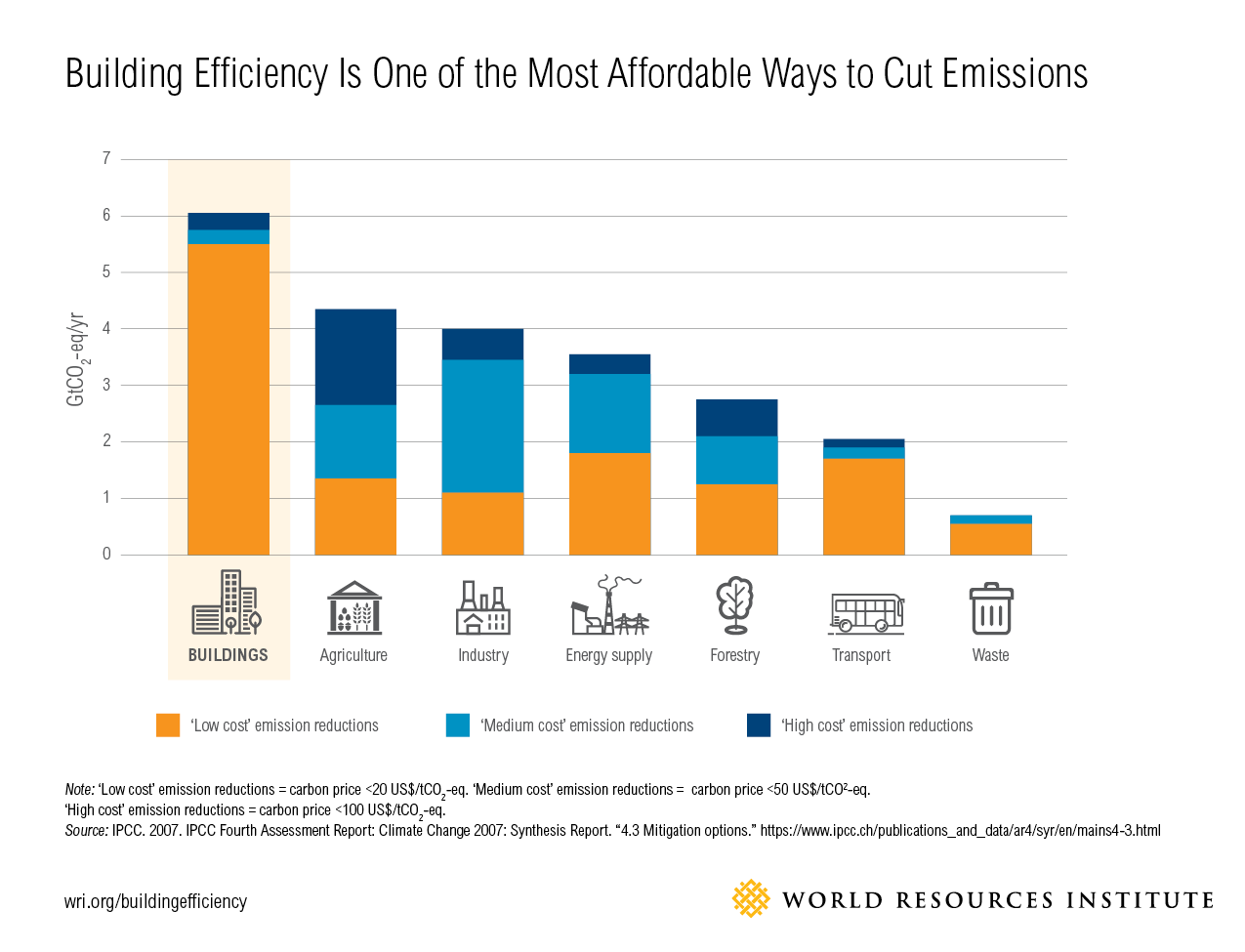Donald Trump’s Uncomfortable Relationship with Renewables


It’s over. After one of the most contentious primary battles in recent memory, it is going to be an all-New York slugfest between Donald Trump and Hillary Clinton. There will be no contested Republican convention in Cleveland this summer, and even though those last few state primaries could “feel the Bern,” it is mathematically impossible for Bernie Sanders to wrest enough delegates to win the Democratic nomination.
So, while the media likely won't focus on substance but instead on the barbs -- or more like the nuclear warheads -- full of insults that will be constant in this battle between Hillary and The Donald, there is much at stake in this election.
One issue that has not received much attention this election cycle is energy. In 2008, when the prices of energy and other commodity were soaring, energy policy was one of the larger items of discussion in the contest between Barack Obama and John McCain. During the primary season, Democrats stepped themselves by touting the virtues of biofuels, while later in the campaign, Sarah Palin’s “drill baby drill” chant became one of the McCain camp's more memorable rallying cries.
But oil was hovering between $90 and $100 a barrel on average that year, while prices have slumped to about $40 to $45 a barrel now. Eight years ago, solar and wind power were seen as expensive alternatives; now they have become cost competitive with fossil fuels.
Whatever one may think of Hillary Clinton, it cannot be denied that she and her campaign team have thought out the issues. Pick them apart, attack them if you want, but they are there, including her views on what needs to be done on energy and climate change.
Donald Trump, however, is only focusing on seven core issues, including his infamous wall. Forget about Trump's bombast and whether you agree with him or not — his articulation of the issues is well written, as it should be for a national campaign site. Energy is not on his campaign’s radar; however, reviewing Trump’s past statements on renewables should worry those who work within the industry.
Trump's views on renewables range from tepid acceptance to hostility; and playing to Hillary Clinton’s missive that she would put “coal miners and coal companies out of business,” he has promised to revive the industry in Appalachia (gaffe or out of context? — read Clinton's full statement here). The Washington Post, however, has called Trump out for a lack of specifics on how that would work.
On one hand, Trump appears to support federal programs that incentivize wind power deployment, with the caveat that wind turbines “kill a lot of birds.” During a November 2015 campaign stop in Iowa, Trump was asked for his opinion of the Department of Energy's wind power tax credits:
“I’m fine with it. Any form of energy – we’ve got to get away from the Middle East. I will say, wind is a problem because it’s very expensive to build the towers – very, very expensive. As you know, when you have $40 oil, it’s not economic, so they’re going to have to do a subsidy, otherwise wind isn’t going to work. Wind is a very expensive form of energy, and it’s got problems of storage, and lots of other things. But, I want to see whatever you can do – ethanol, I’m totally in favor … Wind will need subsidies. It’s going to have to have subsidies.” – Donald Trump in Newton, Iowa, Nov. 19, 2015
On the other hand, Trump viciously attacked wind power if he felt it could negatively impact his business. His relationship with the Scottish government soured when offshore wind farms became central to Scotland’s energy policy, as part of its plan to wean itself away from fossil fuels. One of those wind farms was 1.5 miles out to sea in Aberdeen Bay, and Trump sued to halt the construction of the 11 wind turbines as he felt they would mar local scenery and therefore hurt business at a golf course and resort he planned for the area. Last December, Trump lost his legal battle to prevent construction of the wind farm, and the evidence suggests that locals have more angst over the promised jobs that never materialized than any worry over how offshore wind turbines would spoil their view.
What should really worry the clean-energy industry, however, is what a Trump administration could do to the solar power sector. True, Trump is often quoted for not being a “big believer in climate change.” But forget about his past claim that climate change is a “hoax,” and statement that the concept of global warming was “created by and for the Chinese in order to make U.S. manufacturing non-competitive.” (Trump later claimed that comment was a joke, but the tweet is still online.) Trump's team has said little about renewables period, but it is interesting to note that his campaign manager, Corey Lewandowski, lobbied for solar power companies in the past. While Trump has been dismissive of solar power, describing it as “not exactly a good investment,” his tone toward this technology is at worst dismissive.
But what could harm the solar business in a world in which Trump is president is if he succeeds in implementing what he describes as “reforms” to rewrite the business and trade relationship between China and the U.S. Although he has tried to backtrack from his comments regarding China-U.S. trade, he told the New York Times’ editorial board that goods imported from China should be taxed at a rate of 45 percent.
Trump could say, as he always does, that such a tariff rate is open to negotiation, but what would high tariffs do to America’s solar industry? TriplePundit asked Zachary Shahan, director and chief editor of CleanTechnica and a renewables and clean technology expert, what, if any, impact that such a tariff -- which presumptively would apply to photovoltaic panels and other equipment made in China and exported to the U.S. -- would have on America’s renewables industry.
“I think it would have a significant effect,” Shahan wrote in an email exchange with TriplePundit. “Chinese modules still account for many if not most of the modules being installed in the U.S., and that is due in part to low manufacturing costs and massive investments in solar panel factories in China.
“To slap a huge tariff on those would raise the price of solar in the U.S., hurting industry growth, and since most of the solar jobs are actually in installation, the result would likely be a big net loss for U.S. jobs.”
Shahan also noted that jobs in the solar sector are surging in the U.S., but that could grind to a halt if Trump succeeds in raising tariffs on solar equipment shipped from China.
“Note that there will likely be more solar jobs added in the U.S. in 2016 than oil jobs. This is a huge industry,” Shahan continued. “In 2015, the U.S. solar industry added jobs approximately 12 times faster than the rate at which other industries created jobs, according to some reports. The solar industry added 35,052 new jobs last year — bringing the total number of solar jobs in the U.S. up to 208,859. That was 1.2 percent of new jobs, or approximately 1 out of 83 new jobs in the country.”
Shahan also pointed out another nuance: Because of the large duties already imposed on Chinese solar products, some companies in the industry have been searching for a workaround. Solar factories have started to emerge in Thailand, for example. Such a scenario for solar companies is similar to what other industries, from those making the cheapest products to those within the heavy manufacturing sector, would endure if such high tariffs became the reality. Companies would scramble in order to move manufacturing to countries like Thailand or Vietnam — but such a shift could not happen fast enough for solar companies in the U.S. to stay cost-competitive or even viable. The result would hurt many solar installers, which rely on Chinese-made solar panels to launch these projects across the country.
“Trump could just impose tariffs on Chinese companies, which I imagine would be pretty drastic,” Shahan said. “The current big solar panel manufacturers in the U.S. are SunPower and First Solar. But the top 10 list is dominated by Chinese companies.”
It is true that election-season rhetoric is often quite different once a new president takes office and has to deal with Congress and, of course, D.C. politics. But if we are to surmise the Republican nominee's take on energy policy based on his past statements, the future outlook for renewables in the U.S. with Trump as the nation’s 45th president is at best uncertain — and uncertainty is a condition no business in any sector wants to face, especially within such a relatively new sector as renewables.
Image credit: Gage Skidmore/Flickr
4 Surprising Ways Energy-Efficient Buildings Benefit Cities


Editor's Note: This post originally appeared on the WRI Insights blog.
By Eric Mackres
Urbanization presents major challenges: congestion, sprawl, inefficiency, health hazards and high cost of living, just to name a few. But the choices we make for our cities can transform these challenges into opportunities: mobility, connectivity, economies of scale, healthier lifestyles and economic opportunity.
Experts spend a lot of time identifying solutions to seed these transformations, but too often they forget about cities’ most iconic landmarks—buildings. Improving the energy efficiency of buildings is an often overlooked strategy that can help alleviate many of the challenges cities face—from climate change to public health problems to unemployment and poverty.
New WRI research examines the vital role building efficiency can play in shaping sustainable cities of the future, as well as ways policymakers can accelerate it in their own communities. Here’s a look at four of the economic, social and environmental opportunities building efficiency creates:
1. Buildings are large, long-lasting investments. Efficient buildings provide better social and financial returns.
The construction sector represents 10 percent of world GDP, 10 percent of the workforce, and, in emerging markets, will likely make up 16.7 percent of GDP by 2025. This is a lot of money spent on buildings. These are good, long-term investments, especially because buildings last 40 years or more and construction creates more jobs than other sectoral investments.
Investments in the building sector are less risky and create better returns when directed toward energy-efficient buildings. Globally, buildings and construction are responsible for 60 percent of electricity use, 12 percent of water use, 40 percent of waste, and 40 percent of material resource use. In cities, buildings occupy 50 percent or more of the land area. Each of these is a cost, but each efficiency improvement in energy and resource use removes a cost that the city and its residents no longer have to pay. For example, each additional $1 invested on energy efficiency avoids more than $2 on energy supply spending. Efficiency savings free up money for other investments, stretching scarce resources.
Improvements in efficiency are particularly important for the lowest income urban residents, who pay a larger portion of their income on energy and are least able to afford higher energy prices or cope with unexpected fluctuations in energy costs.
2. Building efficiently the first time offers huge economic opportunities, particularly for developing nations in Asia, Africa and Latin America.
With cities expected to add 3 billion people between 2008 and 2050, almost doubling the global urban population, the world is poised for a building explosion. In fact, an area equal to roughly 60 percent of the world’s current total building stock will be built or rebuilt in urban areas by 2030, mostly in developing or emerging countries such as China, India and Indonesia. Without changes in construction practice, related emissions are also expected to skyrocket.
But how cities choose to build makes a big difference. There is tremendous potential to implement best-in-class building practices in new construction in rapidly growing countries. These countries could in reap the economic and climate benefits of energy-efficient buildings and avoid “locking in” decades of inefficiency and the need for more costly renovations later.
3. Building efficiency is one of the most affordable ways to curb climate change.
In addition to reducing infrastructure costs and household expenses, building efficiency also provides the most bang for the buck in reducing climate change-causing emissions. Efficiency improvements in buildings often have low or no marginal cost, or provide a return on investment in the form of energy cost savings in as quickly as six months to a year. This is a significant difference from emissions-saving investments in other sectors such as agriculture or transport, which are relatively expensive or result in lower emissions reductions.
4. Building efficiency can significantly reduce illness and death related to air pollution, particularly in the places suffering the most.
Every year, approximately 3.3 million deaths are caused by energy-related outdoor air pollution—such as smog from coal-fired power plants—and 3.5 million deaths are due to indoor smoke. The highest rates of exposure are in developing cities, where people are dependent on indoor fuel combustion for heating and cooking. In China and India, the regions with the highest air pollution-related mortality rates, the largest contributors to these deaths are residential and commercial energy use—buildings are at the heart of the problem.
Energy-efficient buildings reduce indoor air pollution because they offer cleaner combustion and better ventilation than traditional buildings. And because they use less energy, they also curb outdoor pollution by reducing the fossil fuel pollution created by power generation. Reduction in indoor and outdoor air pollutants can decrease incidence of illnesses such as asthma and lung cancer, as well as lower the rate of premature deaths. This saves not only lives, but also the financial and social costs of medical treatment and lost productivity.
Efficient buildings—those that make highly productive use of natural resources—are vital to achieving sustainable development. By investing in them today, cities can yield “triple bottom line” benefits—including economic, social and environmental opportunities—long into the future.
Image credits: 1) Flickr/Bill Damon 2) and 3) Courtesy of WRI
Eric is the Building Efficiency Manager with the WRI Ross Center for Sustainable Cities. He supports the Building Efficiency Initiative through program development, project management, and research. Eric contributes to strategy development, work planning, partnership development, fundraising, monitoring, and evaluation related to the Center’s efforts on building efficiency and energy more broadly. He manages global projects and partnerships with key cities, including in Mexico, China and India. Additionally, he helps to conduct research on emerging trends and best practices in building efficiency and sustainable cities.
Seventh Generation’s Plan to Take Over the Market Starts with Funny Woman Maya Rudolph


https://www.youtube.com/watch?v=zNcNA_0NN7o&feature=youtu.be&list=PLPexJwwn4LSsJT8_uglKEwJi_G6Xcvxo-
Maya Rudolph isn’t a fan of “blue goo” or other color-coated laundry detergents. The "Bridesmaids" actress and comedienne was recently tapped as a spokesperson for Seventh Generation’s newly launched $15 million advertising campaign.
In the series of three affable commercials, delivered by ad agency 72andSunny, Rudolph dispels myths about the efficacy of green cleaners while simultaneously calling out bargain-brand detergents for their unnecessary dyes and toxic chemicals.
Very few green cleaning brands turn to celebrity-endorsed commercials to help urge consumer conversion toward more environmentally friendly products. This commercial marks only Seventh Generation’s second attempt at mass-media consumption since its founding in the mid-1980s.
As consumer spending continues to reveal a premium and importance on green products, Seventh Generation is hoping to stay both timely and relevant as the market continues to saturate with competing products and private-label store brands that claim planet-friendly ingredients.
Overall, consciousness about healthy homes and a healthier planet is shared globally. A recent Nielsen survey concluded that 26 percent of consumers consider organic and all-natural ingredients to be important in their cleaning materials. Additionally, 24 percent cite sustainable packaging as important to their purchasing decisions.
While market share is the sure-fire goal for Seventh Generation, the challenge to sway consumers to purchase green cleaners has less to do with fancy creatives and much more to do with consumer trust.
Lawsuits have been filed against brands like Jasons and actress Jessica Alba’s Honest Co. for claims of ingredient purity and non-toxic properties that, when tested, weren't found to be accurate. Greenwashing, as an industry tactic, continues to run rampant -- turning once trustworthy brands into questionable choices in the aisle when consumers can’t decipher between the plethora of claims. Ultimately, price often wins out.
"Everyone is entitled to make the choices they feel are best for their families," Seventh Generation CMO Joey Bergstein told Fast Company. "Without doubt, consumers have the right to know what’s inside the products they purchase—just like they do when it comes to food or personal care products."
Video and featured image courtesy of Seventh Generation
E-Cigarettes: An Issue of Trust


By Michael Green
How much should we trust an industry that has a decades-long history of falsifying science, misleading the public and manipulating data – all in the name of selling a deadly, addictive product? Unfortunately, recent developments suggest that, when it comes to our children’s health, some people are more trusting than they should be.
The Food and Drug Administration (FDA), following nearly a decade of calls for the regulation of e-cigarettes, announced new rules covering these nicotine-delivery devices last week. The rules were met with mixed reactions, even by those public health experts who have been urging agency action on “vaping.”
Vaughan Rees, the director of the Center for Global Tobacco Control at Harvard's T.H. Chan School of public health, called the new rules “a mixed bag,” noting that the FDA failed to curb the marketing of e-cigarettes to teens and younger children (including on television and in other venues barred for traditional cigarette advertising), allowed continued sale of candy-flavored products, and failed to address product standards.
This last failing leaves consumers especially at risk, since labels on e-cigarettes and e-liquids have often (here, here and here, among others) been found to inaccurately state the nicotine levels in products, even finding nicotine in some products marked as nicotine-free.
Rees did praise the FDA for regulating e-cigarettes as tobacco products and banning sales to minors nationwide. But in a New York Times opinion piece, Aaron E. Carroll, a professor of pediatrics at Indiana University School of Medicine, argues for some latitude in regulating teens’ use of e-cigarettes. A ban on sales to minors, he says, may backfire, just as abstinence education fails to stem teens’ risky sexual behaviors.
Nicotine is known to be harmful to women’s reproductive health, may also have effects on male fertility, and has been linked to an increased risk of cardiovascular, respiratory and gastrointestinal disorders. Studies have also found nicotine may have links to cancer.
But Professor Carroll’s suggests is that it’s better to allow kids access to an addictive, harmful drug in e-cigarettes because they might otherwise get access to the drug in the more harmful traditional varieties. E-cigarettes may not be safe, he says, but surely they’re safer than cigarettes.
E-cigarettes may be marginally safer than traditional varieties, but that’s no reason to give them a pass when it comes to our kids. A report from my organization, the Center for Environmental Health, found cancer-causing chemicals in the majority of the nearly 100 e-cigarettes we tested. In some e-cigarettes, chemicals that cause cancer were found at alarmingly high levels: One product contained formaldehyde at a level that was more than 470 times higher than the California safety standard.
Still, Professor Carroll says e-cigarettes are a useful harm-reduction strategy. Backing his case, he says, is a recent study showing that the states which ban e-cigarette sales to minors have more kids smoking cigarettes than states that don’t have such bans. Allowing kids access to e-cigarettes, presumably, is the lesser evil, since it means fewer of them are smoking cigarettes.
But this vague calculus omits the demonstrated effect of e-cigarettes as a gateway to traditional cigarettes. In fact, a 2015 study published in the journal JAMA Pediatrics found that teens who used e-cigarettes were more than three times more likely to start smoking traditional cigarettes compared to other teens. Indeed, the study likely underestimates the actual effect of e-cigarettes on teens generally, as the researchers specifically chose to follow teens who were considered "non-susceptible" to initiating traditional cigarette smoking, since they had responded "definitely no" when asked if they would try a cigarette offered by a friend or believed they would smoke a cigarette within the next year.
The industry understands the susceptibility of teens to tobacco more clearly than Professor Carroll does. That’s why they target their e-cigarette marketing to teens and even younger kids, using all of the tactics they used for decades to hook generations of young people on traditional cigarettes. Traditional cigarettes can’t be sold in candy flavors, can’t be sold using cartoon characters in ads and can’t be advertised on TV, but tobacco companies use all of these tactics and more to hook our kids on e-cigarettes.
While the FDA is making tentative steps in regulating e-cigarettes, our organization is taking on the companies directly. Our legal action has already won agreements with e-cigarette companies that prohibit them from selling candy flavors, end other marketing practices that target kids and teens, conform to labeling laws, and halt their use of unverified health claims.
As we continue to push all e-cigarette makers to meet our demands, one thing is clear: We must not allow Big Tobacco to prey on our children with their addictive, dangerous products.
Image courtesy of the Center for Environmental Health
Michael Green is Executive Director of the Center for Environmental Health.
Accelerating Ahead: GM’s 2015 Sustainability Report


General Motors released its 2015 Sustainability report this week. Entitled Accelerating Ahead: How We Are Sustainably Moving the World, the report looks to the future direction of personal transportation. At the same time, it notes the steps that the company has made in the past year to support that transition.
Says David Tulauskas, GM’s director of sustainability: “We believe sustainability encompasses a wide range of social and economic issues, as well as environmental ones. GM’s global impact certainly includes the environmental performance of our vehicles and our facilities, but it goes much further ... It's pretty clear that Earth – its people and its environment – make up one big shared system. GM has a role to play to make that system work more effectively for all of us.”
In considering that system, it’s clear that Tulauskas and GM are looking beyond the traditional vehicle ownership model that dominated the 20th century, a model that is being shaken up by widespread changes across a wide swath of the social, economic and environmental landscape.
Indeed, the report looks ahead to a future in which connectivity, car-sharing, alternative propulsion and autonomous vehicles play a major role. Says CEO Mary Barra: “We see tremendous potential in these technologies and the long-term benefits for our customers and communities around the world. The GM team is looking to lead this transformation of personal mobility and will continue to deliver on our commitment to responsible manufacturing.”
For starters, the company is leveraging its 20 years of experience with OnStar to enable both advanced safety technology and car-sharing. Car safety features include: low-speed front automatic braking, front pedestrian braking, full display mirror, curb-view camera, surround vision recorder, night vision as well as forward-collision warning, and automatic emergency braking. It also plans to bring SuperCruise, the industry’s first semi-autonomous driver-assist technology, to market next year on the Cadillac CT6.
On the car-sharing front, the company launched its Maven car-sharing brand and invested $500 million in a strategic alliance with rideshare provider Lyft.
As for what will propel these new vehicles as they get around, the words electric and autonomous feature prominently in the report. Chevy made big news this year with its affordable, all-electric Bolt EV, which is estimated to offer a more than 200 miles per charge.
Autonomous features beyond those planned for SuperCruise are also described in the report. Included is research that GM is doing in conjunction with the Michigan Department of Transportation, the University of Michigan’s Mobility Transformation Center and other automakers on a vehicle-to-infrastructure (V2I) corridor. The corridor encompasses 120 miles of metro Detroit roadways, and it will be the largest such deployment in the U.S. Also described are efforts taking place in Ann Arbor’s M-City test facility and the ongoing work in vehicle-to-vehicle (V2V) communication also aimed to improve safety.
The company’s efforts have not gone unrecognized. Mindy Lubber, president of Ceres, the nonprofit sustainability advocate, said: “GM is quickly and appropriately adapting its business to our rapidly changing world, from addressing climate change through public policy advocacy to helping move electric vehicles into the mainstream.”
The U.S. EPA has recognized GM as an Energy Star Partner of the Year – for sustained excellence in energy management for four years running. GM was the only automaker named to the Dow Jones Sustainability Index, and it also received a perfect score from CDP for climate change data reporting.
The company also reported a number of internal sustainability accomplishments over the past year to report. Probably the most important accomplishment a vehicle manufacturer can make at this time is to improve the carbon footprint of its fleet. GM reduced the average CO2 tailpipe emissions of its U.S. fleet by 7.4 percent against a 2011 baseline, with comparable improvements in Europe and Asia. The company grew the number of electrified vehicles on U.S. roads by 9 percent and increased the number of models capable of 40 mpg on the highway from six to nine.
On the waste-management front, GM increased the number of landfill-free facilities to 131, reducing total waste by 3 percent. The company decreased manufacturing energy intensity by 5 percent and carbon intensity by 8 percent compared to the previous year. Compared to a 2010 baseline, those numbers are 14 percent and 15 percent, respectively.
Beyond its own plants, GM teamed up with Nike to co-champion the formation of the U.S. Materials Marketplace, a joint pilot project led by the Corporate Eco Forum, the U.S. Business Council for Sustainable Development and the World Business Council for Sustainable Development (WBCSD). This project brings together 20 companies to identify ways to reuse or exchange undervalued materials via an online database and establish new circular supply chains.
The company also announced $7.8 billion in capital investments around the world that will stimulate employment, an issue it is focusing on with programs like In Charge for the Next Generation. GM also supports STEM (science, technology, engineering and mathematics) education through its sponsorship of programs like A World in Motion and First Robotics Competitions.
At a time of rapid, perhaps even dizzying change in the world of transportation -- when companies that didn’t even exist 10 years ago like Tesla, Uber and Zipcar threaten to reshape the landscape, and cities around the world are looking for ways to ban cars outright -- GM’s report makes it clear that the automaker is still very much in the game, responding to these changes with some bold ideas of its own.
Image courtesy of Chevrolet
The Real Reason Millennials Want Your Brand to Have a CSR Program


By Scott Davis
There has been a lot of talk in the corporate social responsibility (CSR) space about millennials and attracting them to your brand. The prevailing theory is that millennials expect the brands they support to have a CSR program. Unfortunately, there has been very little justification offered for this claim, typically a superficial stat about how people prefer companies with a CSR program over ones without. Who wouldn't?
Yet if it were true that CSR is important to attracting millennials, it would seem to follow that many of the companies that were founded or run by millennials would prominently feature their CSR efforts. They do not, and in fact, it is hard to find any mention of many of their CSR programs existing at all.
If CSR is so important to attracting millennials, why is it that young companies known for innovation don't have strong (if any) programs?
Consider companies like Facebook, Instagram or Box -- all founded by millennials. Facebook does not list any CSR programs on its corporate website. If you search through Facebook itself, the company launched two Facebook Pages to help promote nonprofits and social causes -- Green on Facebook and Nonprofits on Facebook -- yet these are more of a resource for Facebook users to rally around a cause. Further, founder Mark Zuckerberg's recent philanthropy announcement was personal, not an initiative by the company. With Instagram, it’s more of the same. The company enables users to share their causes with the world digitally, while lacking a brand strategy of its own around corporate social responsibility.
Box is arguably one of the best. It runs Box.org, which donates accounts for nonprofits. At best, this program helps build capacity at these organizations but falls short of helping nonprofits achieve their programmatic goals. Storing files in the cloud is not the primary issue they face.
Looking at the companies that weren’t founded by millennials but purposely attract and keep millennials as employees shows a similar situation. These 'millennial farms,' even if run by more senior management, don't often have CSR programs either. For example, HubSpot's culture -- now made famous by Dan Lyons' book "Disrupted" -- is all about employing the millennial, yet the company has no CSR programs indicated on its corporate website.
While Lyons' book comes off as a harsh criticism of HubSpot by a grumpy old man, there is perhaps one insight on millennials he offers. “Believing that your company is not just about making money, that there is a meaning and a purpose to what you do, that your company has a mission, and that you want to be part of that mission—that is a big prerequisite for working at one of these places,” said Lyons in a recent Fortune article.
The millennial wants something to believe in. They crave it and need it. The Facebooks, HubSpots and Boxes of the world embed this into the company mission. They're 'disrupting' social media or marketing or business. That's how they're 'changing the world.' That's the attraction for the millennial. It is something to believe in. There is no need for a CSR program.
In contrast, big established brands don't necessarily have that. They're often the ones getting disrupted. So, they rely on CSR to give that appeal to millennials. Despite being an airline or a bottler or a grocery store, these companies are on a mission with their CSR programs to change the world. Now that's actually something to believe in.
The key is to build your CSR program to align with your business goals and support your mission to change the world, not to make millennials happy. If you build a genuine CSR program to believe in, millennials will come along.
And oh yeah, Silicon Valley, wake up!
Image credit: Pixabay
Scott brings vast experience to Versaic as a marketing, operations and analytics expert. As the VP of Marketing, he focuses on campaign strategy and analysis for digital, social, content and lead funnel management. His previous work has included cloud and marketing consultations and speaking opportunities around marketing analytics, operations, automation and strategy.
Whether it's sponsorship, grants or donation, Versaic's best-in-class solutions are easily combined and customized to provide companies of any size a comprehensive solution for managing their CSR programs. Visit www.Versaic.com to learn more.
Social Entrepreneurs: What’s In a Revenue Stream?


By Pamela Hawley
Social entrepreneurs understand the importance of steady revenue. Yet there is a difference between 'funding sources' and revenue streams.
I have a pretty high standard on what I consider a revenue stream. A startup venture would identify startup capital (funding) and sales from a product/service (revenue). They wouldn’t count startup capital as revenue. Both are valuable financial resources, but they are categorized differently. Funding is to allow you to start-up. Revenue is to sustain and grow your business. Social entrepreneurs need to hold these same high standards as traditional for-profits.
As an investor, I would want to know that you are thinking about securing funding and revenue for your social business or nonprofit. You should demonstrate the foresight to realize you need both. You are also forecasting that you will not always rely on funding/donations. Now second and third injections of funding can help you grow your business. But your investor wants to see you off this and operating independently.
That’s exactly what traditional for-profits must do: They get an initial investment. Then, they have to get off the venture capitalists (VC) and angel funding and stand on their own two legs, 100 percent. VC funding is only intended to get companies off the ground. It’s never ongoing support. Those VCs want to make a return on their investment, so your product or service should be giving them back money. Social impact will be cool and most will love it. But they are not going to want to fund it forever.
But nonprofits raise money in a different way. They often have a large fundraising event, and then a year-end 'donor ask' mailing campaign. This can work: It is good to celebrate the accomplishments of the year. It is wise to send out letters or e-newsletters asking for money during the philanthropy high season. But it’s also a strategy that follows a similar road as other nonprofits, competing with a ton of year-end holiday campaigns just like everyone else. If fundraising goals aren’t met, then program services may be impacted.
So for for-profits, a raise is at the start. For nonprofits, fundraising is ongoing. With UniversalGiving, I always plan to have this natural fundraising in place, taking the best practices from the nonprofit and for-profit worlds. It’s simply smart diversification, which is a sound principle for your personal or organizational financial planning.
But our eventual goal is 100 percent support of our operations from earned revenue. Why? First, let’s take a look at the model.
UniversalGiving provides two services. At our core, UniversalGiving is a nonprofit online platform that connects people with quality giving and volunteering opportunities all over the world. We focus on bringing trust into the donating and volunteering process -- 100 percent of every donation made through UniversalGiving goes directly to highly vetted organizations. UniversalGiving focuses on connecting people with small, local organizations to allow donors’ and volunteers’ time and money to have the greatest impact possible.
Our second service, UniversalGiving Corporate, provides customized services to help Fortune 500 companies scale their Corporate Social Responsibility programs worldwide. We create strategy, operate, and expand CSR initiatives in over 120 countries. Key services include NGO Vetting and Disbursements. We have a proprietary 24-Stage Quality Model used to vet NGOs – pairing people with only the most trusted organizations.
Fortune 500 companies, foundations and donor-advised funds trust our NGO Services to provide a positive impact in the community as well as strengthen their company due to increased employee engagement and retention.
This principle goes back to my goal as a social entrepreneur: Have a lasting philanthropic impact, and make UniversalGiving itself sustainable in its revenue. It’s a balance between a nonprofit’s heartfelt services and stable influx of funding. With creative funding, we can focus on connecting people with vetted giving and volunteering opportunities all over the world. We achieve our vision to create a world where giving and volunteering are a natural part of everyday life using a VC mentality and nonprofit heart.
You should note that the structure will attract different types of funders and motivations. Be aware of the different expectations your supporters will have, such as “heart return” (nonprofit) and monetary return (for-profit). What drives you the most? Then, examine what you believe will best allow the organization to succeed.
Funding gets your service off the ground. Revenue operates and expands your service. Continuous fundraising as a nonprofit diversifies your funding and helps you scale even more. For that and reasons of the heart, I chose nonprofit. By doing both, we are building a social enterprise for the long term.
Image credit: Pixabay
Pamela Hawley is the founder and CEO of UniversalGiving, an award-winning nonprofit helping people to donate and volunteer with top performing, vetted organizations all over the world. She is a winner of the Jefferson Award (the Nobel Prize in Community Service) and has been invited to three Social Innovation events at the White House. She also writes Living and Giving, a blog with the mission of “Inspiring Leaders to Live with Excellence and Love.”
For more information about Pamela and UniversalGiving, follow them on Facebook, Twitter, and LinkedIn.83% of environment and sustainability professionals say UK benefits from EU membership: IEMA survey


A new survey of environmental and sustainability professionals by the Institute of Environmental and Management Assessment shows that an overwhelming majority—83%—believe that European membership has been a positive for UK business.
The poll of over 1,500 professionals found that 78% of respondents believe that the UK is influential in the development of EU environment and climate policy, and 82% believe that being part of the EU gives the UK more international clout, with the ability to exert greater international influence on environmental outcomes by working within the EU block of 28 countries.
IEMA members agree that operating within the EU provides a policy landscape that is more stable, and therefore potentially more effective for both businesses and the environment over the medium to longer term.
IEMA’s Chief Policy Advisor Martin Baxter said: “Environment and sustainabilityprofessionals frequently cite policy certainty as being a key enabler of investment for long term improvement programmes. Whichever way the vote goes, it is crucial to maintain long-term policy stability and continuity in the areas of environment and climate change”.
Overall, 70% of respondents feel that the UK voting to leave the EU would have a negative effect on their organization, 10% a positive effect, and 20% no effect.
Source: IEMA
Photo: Creative Commons / Ssolbergi / MPDO1605
Coca-Cola UK invests £56mn to build sustainable food systems


By Vikas Vij —The food and drink industry can take a number of actions to achieve its vision of building sustainable food systems. These include identifying the flow of materials and ingredients from farm to fork, increasing the use of local resources, and systematically reducing waste.
Following the results of a joint white paper by Coca-Cola Enterprises (CCE) and Cranfield University looking at sustainable food manufacture, Coca-Cola has launched a £56-million investment plan for sustainable operations in the UK. The white paper called Sustainable Manufacturing for the Future includes research on the vision and pathways for sustainability in the UK’s food and drink industry.
The paper shows five pathways to 2050, which include: ‘anticipating the future’, ‘providing nutrition’, ‘sharing the benefits’, ‘inspiring the next generation’ and ‘joining forces’. It recommends that the food and drink industry share more information with customers, offer services that focus on delivering broad value to customers, and engage society when creating products to deliver against customers’ needs.
Steve Adams, Group Director of Supply Chain Operations at CCE UK, said that the company’s research with Cranfield University has revealed valuable insights on how sustainability will evolve across the food and drink supply chain. The company is already putting these actions into practice and has launched a £56m investment plan.
Leadership by both individuals and organizations feature strongly as a core theme throughout the research. Mark Jolly, Professor of Sustainable Manufacturing at Cranfield University, said that the joint research project between CCE and Cranfield University has been a fascinating exploration of how the food and drink industry can truly embrace sustainable manufacturing in the future.
The research paper highlights specific actions that businesses can apply, which will truly impact not only their own organizations, but also their employees, customers and the wider society in which they operate.
Source: Resource
Image Credit: Flickr via sylkky2
Ping-Pong, Bubbles and the State of the Tech Industry


The tech boom has transformed many regions, including the San Francisco Bay Area, with a flood of money leading to high rents, overcrowding and increased gentrification, all of which seem unsustainable. Despite this, it remains a powerful force, one that many predict could collapse at any time. But could something as simple as ping-pong point to the forthcoming implosion of the tech bubble?
That's right. As the Wall Street Journal reported last week, declining sales of ping-pong tables – which are ubiquitous in the open workspaces common in Silicon Valley and other tech hubs – may be a sign that the good times are coming to an end.
"Is the tech bubble popping?" asks WSJ reporter Zusha Elinson. "Ping-pong offers an answer, and the tables are turning. In the first quarter of 2016 ... table sales [from one retailer] to companies fell 50 percent from the prior quarter. In that period, U.S. startup funding dropped 25 percent, says Dow Jones VentureSource."
There might be some truth to the matter this time, as the past year has seen a small wave of shut-downs in the tech industry, from gig house-cleaning service Homejoy last year, to Spoonrocket, a food delivery service, earlier this year. Other companies, including Twitter and Zenefits, have laid off staff. Moreover, in San Francisco, the luxury housing market – the one most closely connected to 'new money' tech millionaires – is slowing down fast. Is this just the latest in a long series of signs that the tech bubble is finally getting ready to pop?
But perhaps this represents something deeper. Ping-pong tables are, in fact, just one of the many perks considered normal in the tech industry, where work goes hand-in-hand with free food, alcohol, and even in-house massages, haircuts and laundry service. What this creates is not only a financial bubble, but a literal one too, where tech staff are living in a world separate from the rest of us, all their needs taken care of, with no reason to mix or integrate with the local community.
I saw this myself on a recent tour of Twitter's San Francisco headquarters, located in a beautiful building full of amenities: numerous in-house cafes, bars, a plethora of free food options and, yes, ping-pong tables. Yet, just down the street is one of San Francisco's poorest neighborhoods, the Tenderloin, with dozens of homeless people living within sight of the Twitter building. No ping-pong tables there, and the only free food can be found at the end of long, slow-moving soup kitchen lines. One more thing you won't find there – many interactions between those living in poverty and the tech staffers living in their bubble.
Perhaps the drop in ping-pong table sales is a sign that the tech boom is over. But perhaps it's also a sign that the industry has matured, and the era of cheap money and massive excess is over. And that could be a good thing. A sustainable, integrated tech community would be a better one. The only bubble that needs popping is the one in which perks like ping-pong tables are considered normal, while the impacts of the tech industry on local communities is ignored.
Image credit: Brett Hendon via Pixabay